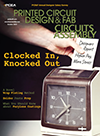Products
CSM7100 SMD pick-and-place fulfils the requirements of a high-mix/low-volume production. The low-cost system places components from 0402 to 33 x 33 mm QFP. The narrow built feeders are intelligent and programmable to reduce changeover time and avoid setup errors.
The large number of feeders (up to 100 x 8 mm) enables manufacturing of complex PCBs in one run and allows for a broad range of standard components. Changeover effort is minimum. High feeder variety provides a wide application range and high flexibility. Tape reels, tape strips, sticks and trays of any size can be used to feed parts. Tall components (15 mm height) can be placed.
All components are aligned "on-the-fly" with a laser centring system. With this touch-less technology components are measured exactly and no damage can occur. Furthermore, the laser alignment system is self-calibrating and requires no maintenance.
Has placement rate of 4,000 cph. Footprint is 80 x 80 cm, with a placement area of 380x250 mm. LIGHTPLACER Windows-based software features a fully graphical man-machine interface. Can be programmed online or offline. Barcode labels on feeders and components guarantee the correct, quick feeder setup using a barcode reader.
The combination of the pick-and-place with a dispenser saves the cost and floor space of additional equipment. A time/pressure or screw valve dispenser can be integrated.
ESSEMTEC AG, www.essemtec.com
SML5050RBG1K-TR is a low-profile, surface-mount, full-spectrum RGB LED. Said to provide excellent performance and terrific visibility in a compact size of 5.5 x 5.5 mm. The RGB diodes emit high-intensity light in a viewing angle of 120°. The red diode's wavelength varies between 620 and 630 nm; the green diode’s is between 520 and 535 nm; and the blue operates between 460 and 475 nm. Luminous intensities range from 150 to 500 mcd at 20 mA current. A water clear lens protects the diode array.
Use with s OptiLED Light Pipes to simplify the spatial relationship between the PCB and remote indicator illumination points. Light pipes channel the LED-generated light to the exact location where the light is required. Compatibility with infrared and vapor phase reflow soldering processes and pick-and-place automated equipment make the LED series cost effective. Broadens the illumination options available for back lighting computer panels, handheld instruments like PDAs, data- and tele-communication status indicators, etc. Solid-state design renders LEDs impervious to electrical and mechanical shock, vibration, frequent switching and environmental extremes. Average life span of 100,000-plus hours (11 years.
LEDtronics Inc., www.ledtronics.com
Flux Pen is a precise, inexpensive, handy tool for applying liquid flux to tiny chip components and individual solder joints. Can be used with different types of fluxes. Its fine tip allows the user to apply flux to very small areas in densely populated assemblies. Cuts down on waste and prevents over-fluxing, reducing possible cleaning time and preventing contamination.
Transparent cartridge allows the user to see the amount of remaining material in the pen; has small, compact size and large capacity. Flux is dispensed by lightly squeezing the barrel; the user controls the amount of flux flow. A snug-fitting cap prevents flux evaporation in the barrel. Constructed of rugged polypropylene, the refillable pen features an ergonomic design, and is compact enough to fit into the top pocket of a lab coat.
Cobar Solder Products (U.S.); contact Bob Silveri: cspbob@aol.com.
Press Releases
- NEDME Returns October 22 — The Northwest’s Premier Design & Manufacturing Expo
- CE3S and Desco Announce Upcoming ANSI/ESD S20.20-2021 Training Series for ESD Professionals
- ViTrox Americas Appoints ArgoZeta as Sales Partner for the Mid-Atlantic Region
- Altus Group Expands Service Team with Addition of Experienced Engineer


